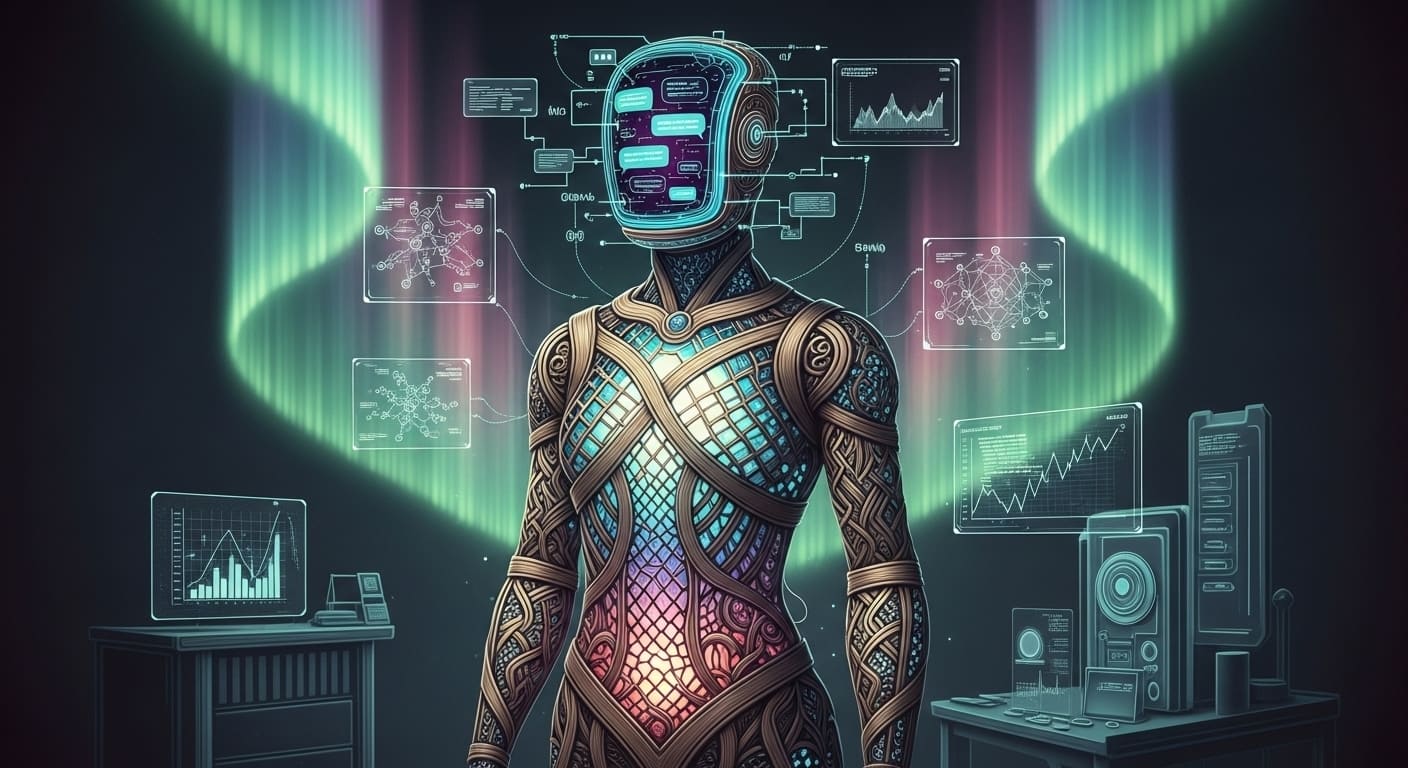Ever wonder why healthcare apps sometimes feel like they’re stuck in the Stone Age—even with all the tech around us? The truth is, patients and providers alike struggle with slow, inaccurate diagnostics and fragmented data. That’s where AI in healthcare apps changes the game. By bringing predictive health insights and cutting-edge image recognition directly into apps, AI is transforming diagnostics from guesswork to precision. Stick around, because this guide breaks down exactly how AI is fueling a healthcare revolution right in your phone.
Predictive Health: The Future of Personalized Healthcare
Predictive health is rapidly becoming a cornerstone of modern medicine. At its core, predictive health uses advanced algorithms and AI models to analyze complex patient data and forecast disease risks before symptoms even appear.
AI in healthcare apps taps into vast datasets—ranging from genetics, lifestyle habits, electronic health records (EHRs), to real-time biometric data—to identify subtle patterns indicating potential health issues. This predictive capability allows for preemptive medical intervention rather than reactive treatment, fundamentally changing patient outcomes.
For example, apps like Cardiogram and KardiaMobile embed AI to predict heart-related risks by continuously monitoring user health metrics such as heart rate variability and ECG signals. Early warnings of arrhythmias or heart disease enable patients to seek medical care sooner, preventing critical events.
The benefits for patients are profound:
- Early detection reduces the progression of chronic diseases.
- Personalized care plans tailor interventions to individual needs.
- Reduced healthcare costs by avoiding emergency treatments.
Providers also gain by having richer, AI-driven data insights to make faster, more accurate diagnoses. Predictive health models alleviate diagnostic uncertainty and free up clinical resources. Ultimately, AI in healthcare apps fosters a preventive care ecosystem where health issues are caught early and managed proactively.
To maximize these outcomes, developers should ensure apps can safely aggregate comprehensive data while delivering clear, actionable risk assessments that patients and clinicians trust.
Enhancing Diagnostics with Image Recognition Technology
Another powerful dimension of AI in healthcare apps is image recognition. AI-driven image recognition translates visual medical data—like photos, scans, and X-rays—into precise diagnostic insights.
Modern AI models, particularly those based on deep learning, excel at identifying subtle anomalies in medical images that may be invisible to the human eye. This technology is revolutionizing diagnostic workflows in areas including:
- Skin cancer detection: Apps like SkinVision utilize AI image recognition to analyze photos of skin lesions, detecting melanoma risk with accuracy comparable to dermatologists. Users can get real-time assessments and recommendations for professional evaluation.
- Radiology scans: AI algorithms assist radiologists by reading CT scans, MRIs, and X-rays, highlighting suspicious areas such as tumors or fractures for further review. Some apps integrate these capabilities directly to aid remote diagnostics.
- Ophthalmology apps: Tools like EyeArt use image recognition to detect diabetic retinopathy from retinal images, allowing earlier diagnosis of vision-threatening diseases.
The accuracy improvements over traditional methods are substantial. AI reduces human error, speeds up diagnosis, and standardizes interpretations across practitioners. This also supports telemedicine by providing reliable first-line assessments outside clinical settings.
Despite these advantages, integrating image recognition into apps faces challenges:
- Data quality and labeling: Training AI requires extensive labeled medical images, which are often scarce or proprietary.
- Computational demands: Running image recognition models on mobile devices requires optimization to balance performance and battery life.
- Regulatory hurdles: Medical image analysis tools must comply with clinical safety and privacy regulations.
Innovations like federated learning—where AI models train on decentralized data without exposing patient information—are helping overcome data privacy concerns. Cloud-based AI inference paired with edge computing can optimize performance for in-app diagnostics.
Incorporating image recognition empowers healthcare apps to serve as accessible, intelligent diagnostic assistants enhancing both patient self-care and clinical workflows.
Integrating Predictive Health and Image Recognition in Healthcare Apps
The real magic happens when AI capabilities around predictive health and image recognition converge within comprehensive healthcare apps. This synergy creates holistic diagnostic tools that analyze multiple data types and deliver richer insights than either technology alone.
By combining predictive analytics with image recognition, apps can:
- Provide robust risk stratification based on clinical history alongside up-to-date imaging data.
- Offer personalized recommendations for screenings, tests, or lifestyle modifications.
- Improve diagnostic accuracy by cross-validating findings from images and predictive models.
A growing number of healthcare apps now integrate these dual AI capabilities. For instance, Butterfly Network’s app uses portable ultrasound imaging powered by AI to help clinicians detect cardiac abnormalities—feeding image data into predictive models for comprehensive evaluation. Similarly, apps focused on chronic disease management combine predictive health scores with retinal image analysis to monitor diabetic complications.
Beyond technology, privacy and ethics are major considerations when dealing with sensitive medical data in these integrated apps. Developers must:
- Encrypt data both at rest and in transit to safeguard patient confidentiality.
- Implement anonymization techniques where possible to protect identities.
- Adhere to frameworks like HIPAA, GDPR, and FDA guidelines for medical software.
- Ensure transparency with users about AI decision-making processes to enhance trust.
Balancing AI innovation with stringent data governance ensures healthcare apps provide powerful diagnostics without compromising user privacy or ethical standards. As adoption grows, responsible integration is foundational to achieving better patient outcomes and clinician acceptance.
Emerging Trends and Future Opportunities in AI Diagnostics
Looking ahead to 2025 and beyond, the AI diagnostics landscape in healthcare apps is set for exciting advances and new challenges.
Advanced AI algorithms are becoming more sophisticated—leveraging multimodal learning which simultaneously analyzes images, text, and sensor data for deeper insights. Explainable AI (XAI) techniques are improving transparency, helping clinicians understand why AI makes particular diagnostic suggestions.
Wearable tech and real-time data integration are expanding the reach of AI diagnostics. Continuous glucose monitors, smartwatches, and biosensors feed live streams of data into apps, enabling timely detection of anomalies like arrhythmias or glucose spikes. This integration makes healthcare apps dynamic, responsive health companions rather than static tools.
From a regulatory perspective, agencies worldwide are crafting clearer standards specifically for AI-driven medical software, ensuring safety and efficacy without stifling innovation. Programs facilitating faster FDA approvals for AI diagnostics coupled with post-market monitoring frameworks encourage responsible scaling.
For healthcare organizations and developers, scaling AI in apps responsibly requires:
- Building interdisciplinary teams combining AI experts, clinicians, and ethicists.
- Investing in diverse data sources to train inclusive AI models that avoid bias.
- Partnering with trusted vendors and platforms offering robust AI infrastructure and compliance support.
The growing maturity of AI in diagnostics heralds a future where healthcare apps become indispensable in daily wellness management and clinical decision-making. Those who embrace these emerging tools today position themselves at the forefront of digital health transformation.
Conclusion
AI in healthcare apps is no longer a futuristic concept—it’s transforming how diagnostics happen today, making care smarter, faster, and more personalized. From predictive health to image recognition, these technologies empower both providers and patients with actionable insights. For organizations aiming to lead this innovation wave, WildnetEdge stands out as a trusted partner, delivering robust AI solutions tailored for healthcare. Ready to revolutionize your healthcare app? Connect with WildnetEdge and take the leap into smarter diagnostics now.
FAQs
Q1: How does AI improve predictive health in healthcare apps?
AI analyzes large datasets to identify patterns and predict potential health issues early, enabling proactive treatment via healthcare apps.
Q2: What role does image recognition play in healthcare diagnostics?
AI-driven image recognition helps interpret medical images like X-rays or skin lesions rapidly and accurately, improving diagnostic confidence in apps.
Q3: Are healthcare apps with AI diagnostics secure for sensitive patient data?
Leading healthcare apps employ strict encryption, anonymization, and comply with regulations like HIPAA to protect data privacy while using AI.
Q4: Can AI diagnostics in healthcare apps replace human doctors?
AI supports clinicians by providing data-driven insights but does not replace the need for professional medical judgment and patient care.
Q5: What are some challenges in implementing AI in healthcare apps?
Challenges include data quality, algorithm biases, regulatory compliance, and integrating AI seamlessly into existing healthcare workflows.

Nitin Agarwal is a veteran in custom software development. He is fascinated by how software can turn ideas into real-world solutions. With extensive experience designing scalable and efficient systems, he focuses on creating software that delivers tangible results. Nitin enjoys exploring emerging technologies, taking on challenging projects, and mentoring teams to bring ideas to life. He believes that good software is not just about code; it’s about understanding problems and creating value for users. For him, great software combines thoughtful design, clever engineering, and a clear understanding of the problems it’s meant to solve.
 sales@wildnetedge.com
sales@wildnetedge.com +1 (212) 901 8616
+1 (212) 901 8616 +1 (437) 225-7733
+1 (437) 225-7733































